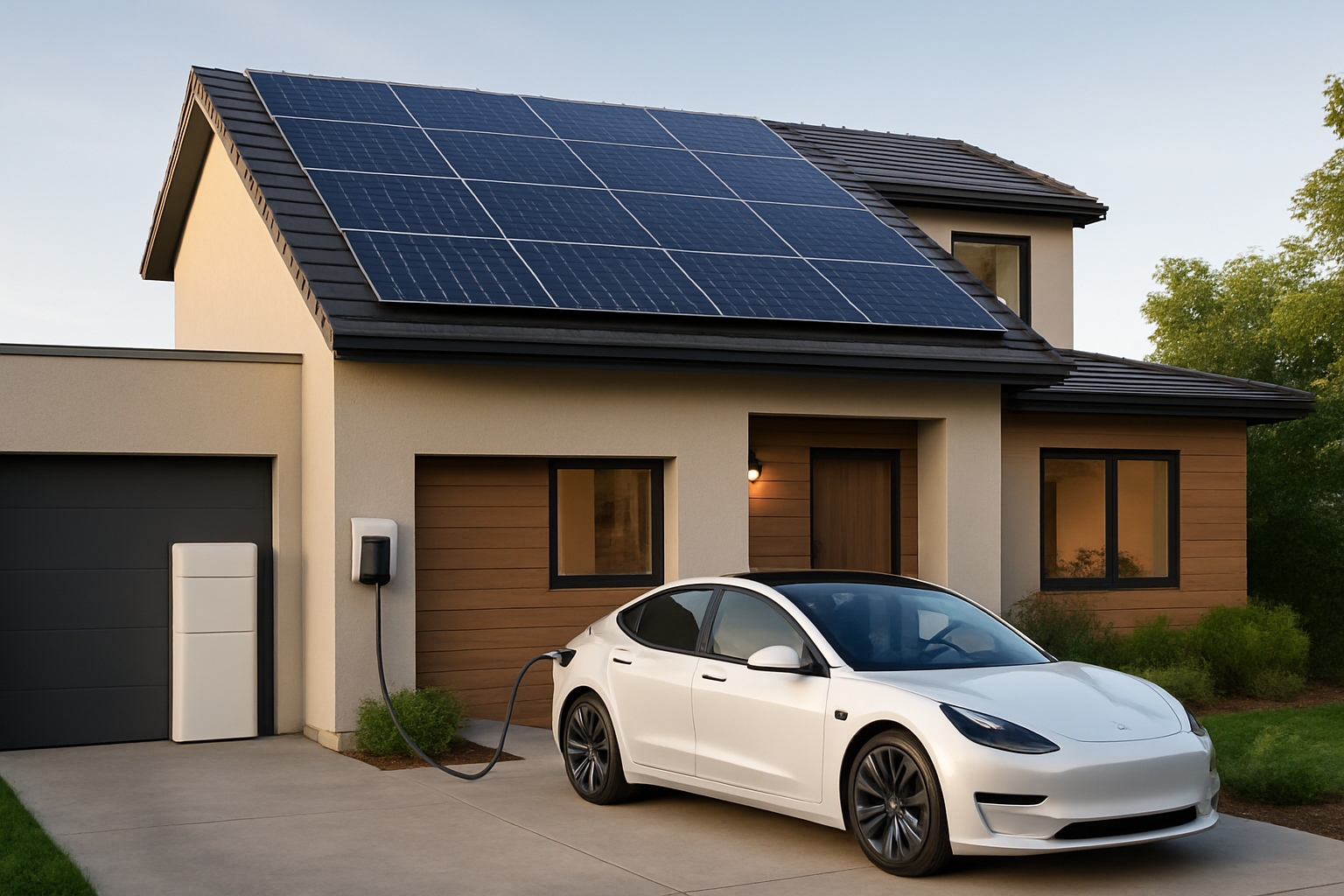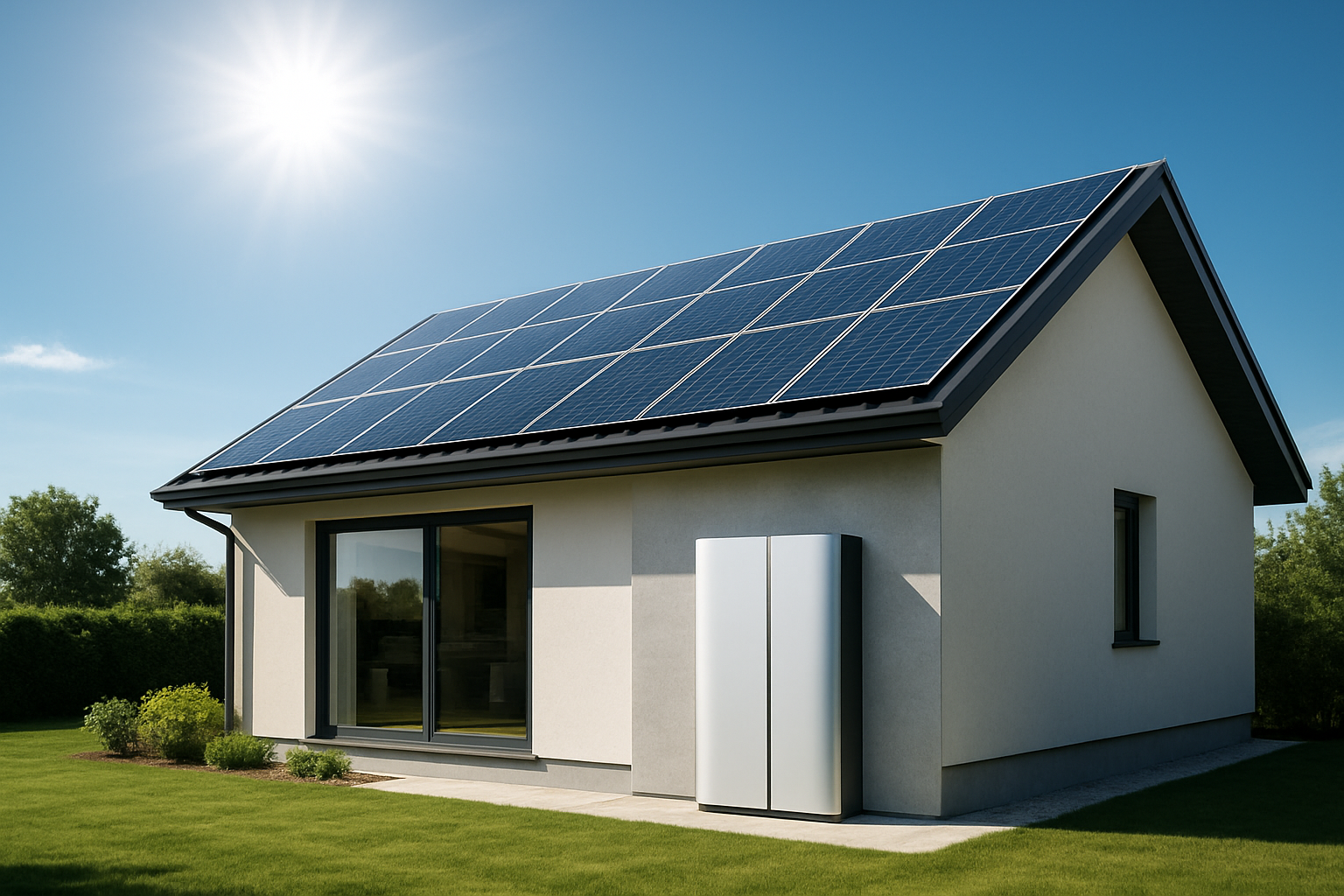Explore how solar energy offers a robust, data-backed defense against escalating electricity costs, providing predictable savings and energy independence for three decades. Discover the long-term financial stability solar brings to your home.
Introduction
Electricity bills often feel like an unpredictable expense, subject to fluctuating market forces and external events. You might wonder if there is a way to gain control over these rising costs, especially when planning for the long term. Solar energy presents a compelling answer, offering a strategic approach to stabilize your energy expenditures for decades.
This article examines how solar power acts as a powerful hedge against utility rate hikes, providing a comprehensive look at the financial stability it can bring to your home over a 30-year horizon. We will explore the historical trends of electricity prices, the mechanisms by which solar offers protection, and the significant long-term returns you can expect from this investment.

The Volatility of Traditional Electricity Costs
Understanding the unpredictable nature of conventional electricity costs is the first step toward appreciating solar's value.
Historical Trends of Rate Hikes
-
Electricity prices in the United States have consistently climbed over time. The U.S. Bureau of Labor Statistics indicates that electricity prices were 527.59% higher in 2025 compared to 1913, with an average inflation rate of 1.65% per year during that period. More recently, the U.S. Energy Information Administration (EIA) reports that electricity prices have increased by an average of 2.85% per year over the past 25 years.
-
Some regions experience even more substantial increases. California, for instance, saw a 91.08% rise in residential electric utility rates from 2014 to August 2024, an average yearly increase of 6.78%.
-
In 2022, the global oil and gas industry recorded a net income of approximately USD 4 trillion, driven by high prices. This figure highlights the significant financial impact of fossil fuel market volatility on consumers.
Factors Driving Utility Rate Increases
-
Primary drivers include the volatile prices of fossil fuels such as coal, natural gas, and oil, which many power plants rely on for electricity generation.
-
Utilities also face increasing costs associated with upgrading and maintaining aging grid infrastructure. Investments in transmission and distribution networks are necessary to ensure reliability, but these costs are often passed on to consumers.
-
Repairs following natural disasters and extreme weather events further contribute to rising utility expenses.
-
As more consumers adopt energy-efficient practices or generate their own power, the utility's fixed operational costs are distributed among a smaller volume of sales, potentially leading to higher rates for remaining grid-reliant customers.
Solar Energy: A Long-Term Financial Shield
Solar energy offers a powerful alternative, transforming your relationship with electricity costs.
Fixing Your Energy Costs for Decades
-
When you install solar panels, you generate your own electricity, significantly reducing or even eliminating your reliance on the utility grid. This allows you to lock in your energy costs for the long term, protecting you from future rate increases.
-
Modern solar panels are durable and designed for longevity. Their expected lifespan is typically 25 to 30 years, with some high-quality panels theoretically lasting up to 50 years. Most manufacturers offer performance warranties for 25 years, guaranteeing a certain level of output.
-
Solar panel efficiency gradually declines over time, a process known as degradation. The National Renewable Energy Laboratory (NREL) reports an average degradation rate of about 0.5% per year. This means a 20-year-old panel could still produce about 90% of its original capability.
-
Over their lifespan, solar panels can lead to substantial savings. Homeowners can save anywhere from $25,500 to $33,000 on electricity expenses over the lifetime of their panels. A typical U.S. homeowner might save around $1,500 per year on electricity bills.
The Role of Solar in Price Stability
Solar power has consistently demonstrated its economic competitiveness in the energy market.
-
Despite recent fluctuations, the levelized cost of electricity (LCOE) for solar photovoltaic (PV) and wind remained a more attractive proposition than fossil fuel power for new generation in most markets in 2022.
-
The global average LCOE for utility-scale solar PV decreased by an impressive 90% between 2010 and 2023, reaching USD 0.044 per kilowatt-hour (kWh). This makes renewable power generation, particularly solar, the default source of least-cost new power generation in many places.
| Energy Source | Cost Volatility | Long-Term Predictability | Typical Price Drivers |
|---|---|---|---|
| Traditional Grid Electricity | High (subject to market and regulatory changes) | Low (unpredictable rate hikes) | Fossil fuel prices, grid upgrades, demand, regulatory decisions |
| Solar Energy (Owned System) | Low (fixed initial investment) | High (predictable generation, minimal ongoing costs) | Initial system cost, panel degradation (minor), maintenance (minimal) |
Enhancing Resilience with Energy Storage Systems
While solar panels generate power during daylight hours, integrating energy storage amplifies your energy independence and savings.
Beyond Solar: Maximizing Savings with Battery Storage
-
Battery storage systems work seamlessly with solar panels to store excess energy generated during peak sunlight hours. This stored energy becomes available for use at night, on cloudy days, or during periods of high demand when grid electricity rates are higher.
-
This capability is particularly beneficial with Time-of-Use (TOU) electricity pricing structures, common in many regions. By drawing from your stored solar energy during expensive peak hours, you can significantly reduce your electricity bills.
-
Investment in battery storage has seen rapid growth. Global expenditure on battery storage exceeded USD 20 billion in 2022, with the United States, China, and Europe accounting for 90% of this spending. China's spending on battery storage tripled in 2022 to almost USD 8 billion, projected to increase to USD 14 billion in 2023. The U.S. saw spending of USD 6 billion in 2022, expected to more than double to USD 13 billion in 2023.
-
Lithium-ion batteries are a popular choice for energy storage systems due to their efficiency and performance. Our company specializes in high-performance, safe, and reliable lithium iron phosphate (LiFePO4) batteries, a type of lithium-ion battery known for its durability.
Integrated Solutions for Comprehensive Energy Independence
-
A well-designed home energy storage system integrates lithium batteries, hybrid inverters, and solar panels into a cohesive unit. This integrated approach ensures optimal energy capture, conversion, and utilization, maximizing your self-consumption of clean energy.
-
Beyond daily savings, energy storage provides a crucial layer of resilience by offering backup power during grid outages. This ensures continuous electricity supply for your home, protecting you from disruptions.
-
The lifespan of home energy storage systems typically ranges from 10 to 12 years, with some premium models lasting 15 years or more. Many manufacturers provide warranties covering 10 years or a certain number of charging cycles, often between 6,000 to 10,000 cycles. While shorter than solar panels, batteries are a critical component for achieving true energy independence and maximizing savings.
-
For locations without grid access, off-grid solar solutions, combining solar panels with robust battery storage, offer complete energy self-sufficiency.
The Investment Outlook: 30-Year Perspective
Investing in solar energy is a long-term financial decision that offers compelling returns and aligns with broader energy transitions.
Analyzing Long-Term Return on Investment (ROI)
-
Solar energy systems offer a strong Return on Investment (ROI), typically ranging from 8% to 20% annually. This often outperforms traditional investments like stock market index funds.
-
The payback period for a solar system, the time it takes for your energy savings to offset the initial installation cost, typically ranges from 4 to 10 years for many customers. The average payback period in the U.S. is between 9 and 14 years. After this period, the electricity generated is essentially free.
-
Beyond direct savings, solar panels can increase your home's value. Studies indicate that homes with solar panels sell for a premium, averaging a 4.1% increase in value across the U.S., or about $9,274 on a $226,300 home. Some research suggests buyers are willing to pay a premium of about $15,000 for a solar-equipped home.
-
Solar investments are resilient to economic volatility. Unlike the stock market, your solar investment's value is not directly tied to market fluctuations. In fact, if inflation increases, and electricity prices rise, your solar ROI can actually improve, as the value of your self-generated electricity grows.
Government Incentives and Policy Support
-
Governments worldwide are actively supporting the adoption of clean energy through various incentives. In the United States, the federal Investment Tax Credit (ITC) allows you to deduct 30% of your solar system's installation cost from your federal taxes.
-
The U.S. Inflation Reduction Act (IRA) provides significant financial support for clean energy technologies, including battery storage. This legislation could reduce capital costs for battery storage by almost 15%, providing a substantial boost to U.S. battery storage investment.
-
Many states and local governments offer additional rebates, incentives, and loan programs that further reduce the upfront cost of installing solar panels and batteries, making the transition more accessible and financially viable.
-
The European Union, for example, aims to raise its renewable target for 2030 to a minimum of 42.5% of final energy consumption, up from the previous 32% target. Such ambitious policies reinforce the long-term stability and growth of the solar and storage markets.
A Stable Energy Future
Considering the historical upward trend of electricity rates and the proven long-term financial benefits of solar energy, investing in solar with integrated energy storage offers a compelling solution for energy independence and cost stability.
By generating your own power, buffering against peak pricing with battery storage, and leveraging supportive policies, you secure predictable energy costs for the next 30 years and beyond. This proactive approach allows you to take control of your energy future, providing both financial peace of mind and enhanced resilience for your home.





Leave a comment
All comments are moderated before being published.
This site is protected by hCaptcha and the hCaptcha Privacy Policy and Terms of Service apply.